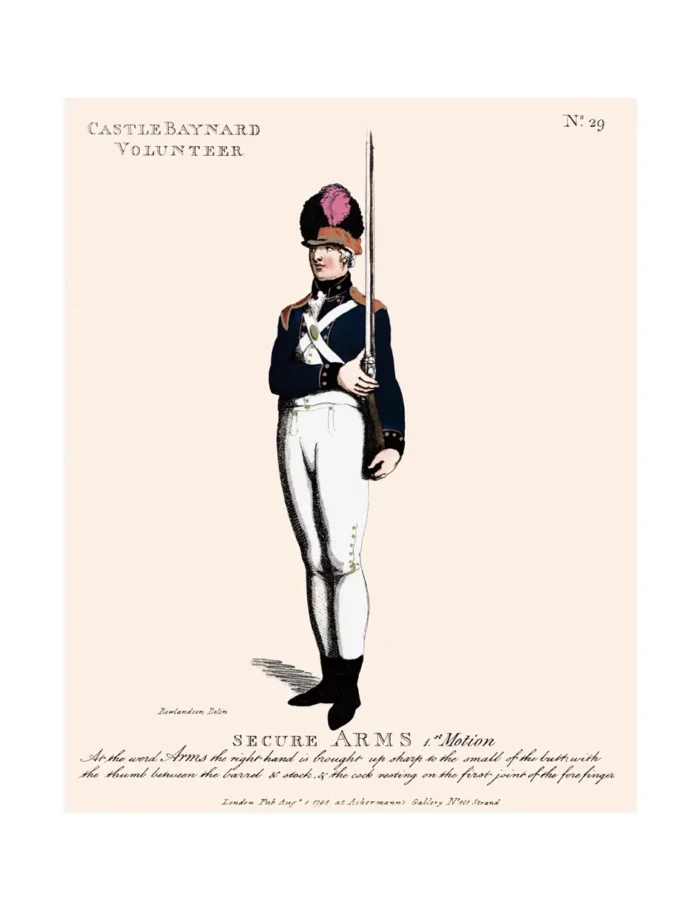No. 29 Castle Baynard Volunteer
£12.00
Castle Baynard (scroll down for a more detailed Description)
The first reprints of the 1798 aquatints by Thomas Rowlandson (published by Rudolph Ackermann) published in 1972 by Hugh Evelyn Limited.
Image size is 20.5 x 25.5 cm [8” x 10”] against a light greyish orange background (c. RGB fcf2e1) impressed on medium high white matt cartridge paper of c. 120 g/m2.
Print size: c. 26.2 x 33.7 cm [17” x 12 ¾”] may vary slightly from printers’ cut 50 years ago
Details of London Wards and Parishes provided by © the British Library
We offer thanks to the Trustees of the British Library and British Museum and Wikipedia for some text (and map outlines
Print is STANDARD size – shipping is the same for 1 to 10 prints (based on largest print size in your order) – see Shipping & Returns
Who were the Loyal Volunteers ? See here
In stock
- Satisfaction Guaranteed
- No Hassle Refunds (see Shipping and returns)
- Secure Payments
Description

Castle Baynard (see map) is one of the 25 wards of the City of London, the historic and financial centre of London. The ward covers an irregularly shaped area, sometimes likened to a tuning fork, bounded on the east by the wards of Queenhithe and Bread Street; the ward of Farringdon Without to the north and west; the ward of Farringdon Within to the north; and by the River Thames to the south. Major landmarks within the ward include Blackfriars Bridge (the full span of which falls within the City and this ward), the naval establishment HMS President, and St Paul’s Cathedral. In addition, the area includes the churches of St Bride’s, which the Poet Laureate Sir John Betjeman described as “magnificent, even by the exalted standards of Sir Christopher Wren“, and St Andrew-by-the-Wardrobe. The ward formerly also included the Church of St Mary Magdalen Old Fish Street, which burned down in 1886 and was not rebuilt, and its own charitable foundation, Castle Baynard Ward School. Today the Mermaid Theatre, on the site of Curriers’ Alley and Puddle Dock, lie within the ward’s catchment area. The north-bank entrance of Blackfriars station, the only London station to span the Thames, also lies within Castle Baynard. Boundary changes in 2003 expanded the ward considerably into the traditional area of the two Farringdon wards, though a small amount of territory was lost to Queenhithe ward. Today, Castle Baynard is busy and an exceptionally concentrated area of commercial and tourist activity, but still retains its own distinct identity. Castle Baynard derives its name from Baynard’s Castle, which existed there from the Norman Conquest until it burnt down during the Great Fire of London in 1666. It was anciently spelled as one word — Castlebaynard — but this is regarded today as incorrect.
Additional information
| Weight | 0.0121 kg |
|---|---|
| Dimensions | 25.25 × 32.5 cm |





